EXHIBIT PREVIEW
Founding of a Men’s College in Claremont
1887 – 1946
 Seven of Claremont McKenna College’s founding trustees are honored during a campus event in 1972. From left to right: Burnet C. Wohlford, Russell K. Pitzer, Donald C. McKenna, John M. Marble, Robert J. Bernard, Garner A. Beckett, George C.S. Benson.
Seven of Claremont McKenna College’s founding trustees are honored during a campus event in 1972. From left to right: Burnet C. Wohlford, Russell K. Pitzer, Donald C. McKenna, John M. Marble, Robert J. Bernard, Garner A. Beckett, George C.S. Benson.It takes extraordinary vision to found a world-class college, but it also takes more: Passion. Planning. Perseverance. And an ability to navigate changing economic conditions and shifting political winds.
Claremont McKenna College is celebrating 75 years of excellence. Its ongoing achievements – and the singular successes of its alumni and faculty – are the result of a rich history of innovation and investment. The College’s founders, and the long line of dynamic leaders who followed them, fostered a culture of collaboration and a focus on getting results.
The CMC Digital Archives
Join with Claremont McKenna College as we celebrate our vibrant 75-year history. Reflecting back on the College’s modest origins will lead to perspectives on the College’s current success and will inform the College’s aspirations for the future.
The 2021-22 academic year will be spent commemorating the milestones of the last 75 years in monthly exhibitions that will focus on faculty, students, campus buildings, presidents, coeducation, research institutes, the role of veterans, and others.
Pomona College Opens Its Doors
In 1887, Pomona College was founded with leadership from the Southern California Association of Congregational Churches. Its first classes were held in a small five-room house, known as Ayer Cottage, in Pomona on September 12, 1888.
1888–1889
Pomona College moves to Claremont after a proposed campus at Piedmont Mesa falls through. The College signs an agreement transferring ownership of the abandoned Hotel Claremont from the Atchison, Topeka and Santa Fe Railroad on October 21, 1888. Classes commence in the renamed Claremont Hall in January 1889.
1910
James Blaisdell becomes president of Pomona College, a position he will hold for 18 years. At the time, the college has an enrollment of 500 students.
1920
To sustain the quality and intimacy of its education, Pomona College limits enrollment to 750 men and women. This results in the College needing to turn away two out of every three applicants. After a trip to England, President Blaisdell proposes an Oxford/Cambridge-style academic culture for Claremont, with a group of autonomous colleges sharing programs and facilities but maintaining separate identities.
Establishing The Claremont Colleges
1924
Newspaper magnate Ellen Browning Scripps gives a large donation to purchase 250 acres of land surrounding Pomona’s campus for future colleges.
1925
President Blaisdell, Colonel Seeley Mudd and Jacob Harper (Ellen Browning Scripps’ attorney) are named to the board of a new corporation, the Claremont Colleges.
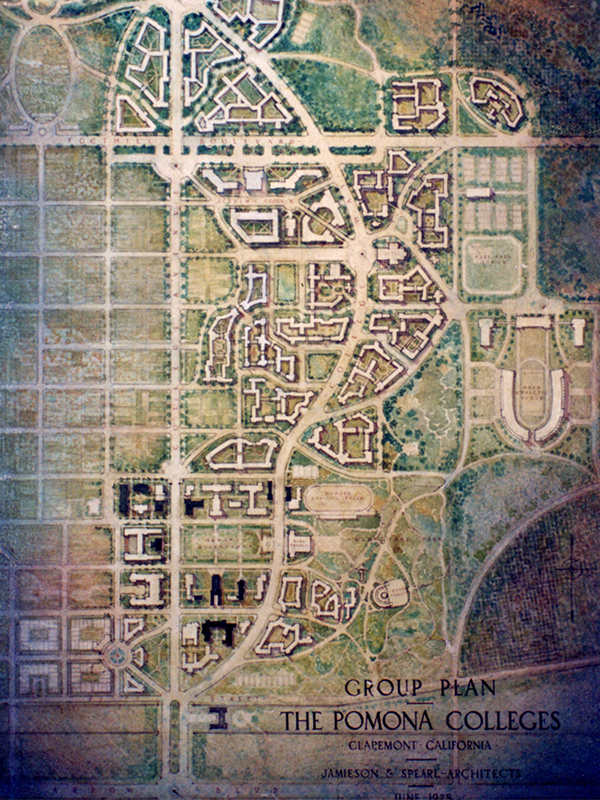
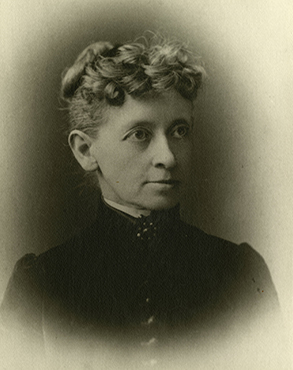
A Second College Comes on Board
The board’s first achievement is the founding of Scripps College for Women in 1926. The newly established college spares no expense in its distinguishing architecture: Architect Gordon Kaufmann designs the new institution as a Spanish Renaissance cloister, with courtyards and connecting arcades, concrete surfaces, red tile roofs, tile porticos and iron grills.
Image: Ellen Browning Scripps Collection, Claremont Colleges Digital Library1927
Chaired by Scripps Trustee and Caltech Professor of History and Government William Munro, a committee looks into the feasibility of a third college – this one, for men. While plans for a men’s college will be reworked over the next 19 years, the identity of the college at its founding (a business and public affairs-oriented institution within a liberal arts framework) remains substantially as it was envisioned by Munro and his colleagues.
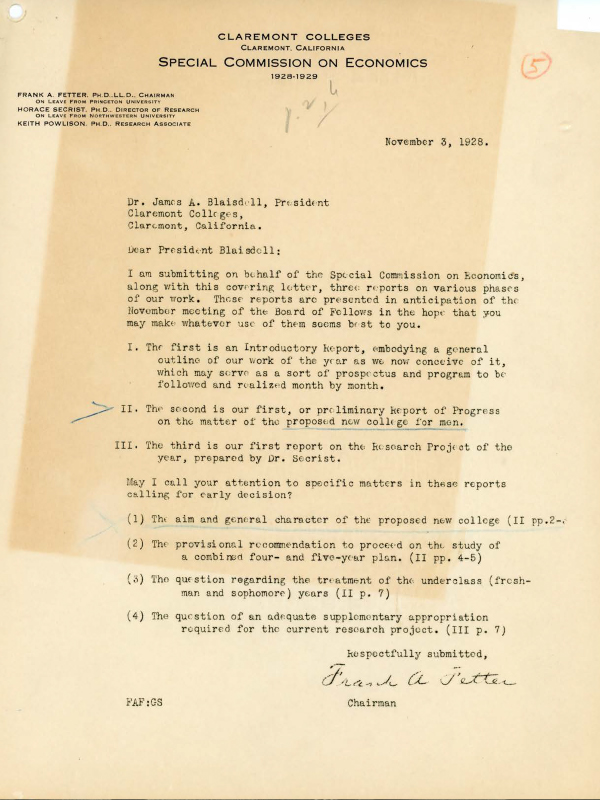
1929-1936
The stock market crash and subsequent Great Depression slow progress on planning for the men’s college. President Blaisdell spends his final year in office preparing a report endorsing the concept and articulating its role as part of a robust college consortium.
A Men’s College Comes Into Focus
Despite the setbacks created by the Depression, plans for a third college continue to move forward. In 1935, a report from the Intercollegiate Council endorses a three-year program and locates the site of the new campus east of Pomona College, centered on the former home and estate of Sarah Bixby Smith.
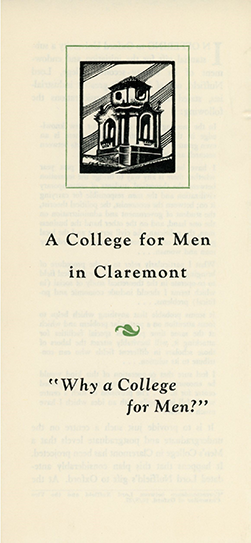
1937
Russell Story begins his term as president of the Claremont Colleges. Over the next two years, nine pamphlets supporting the establishment of a men’s college are published, outlining its viability and goals.
1941–1944
The United States’ involvement in World War II delays the founding of a men’s college yet again, as resources and attention are focused abroad.

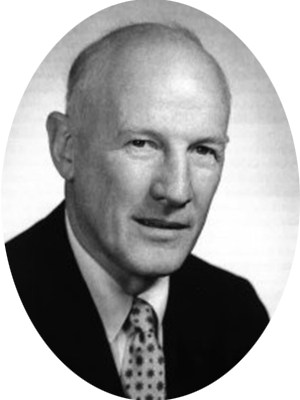
1944-1946
The Claremont Colleges are reorganized and renamed Claremont College. Pomona College graduate Donald McKenna shows growing interest in a third college program. McKenna leads the establishment of a founding budget; his early gifts, as well as the funds he helps raise, play a critical role in making the college a reality.
1946
The Claremont College board appoints George Benson as director of the men’s college, authorizes him to recruit faculty, and accepts the budget ($88,000) raised by the organizing committee. The Bixby Smith house is renamed Story House in honor of Russell Story’s leadership of the new college. It is the campus’ only permanent building. September 23 marks Registration Day, the campus’ first official day as an institution. Eighty-six students (11 beyond the break-even point) enroll, and a promising future begins.
Story House was named in honor of Russell Story for his leadership of the Claremont Colleges (1937-1942) and his efforts in keeping the idea of a men’s college alive through the Depression era. He passed away in 1942 – an untimely and sudden death – and as such, this was the reason for the name dedication.
